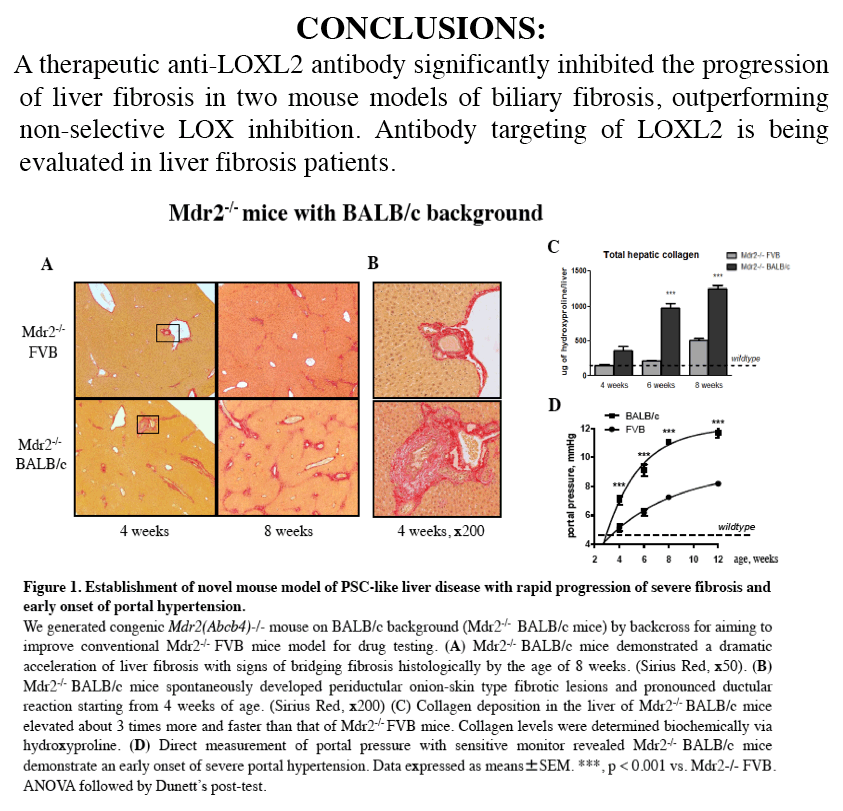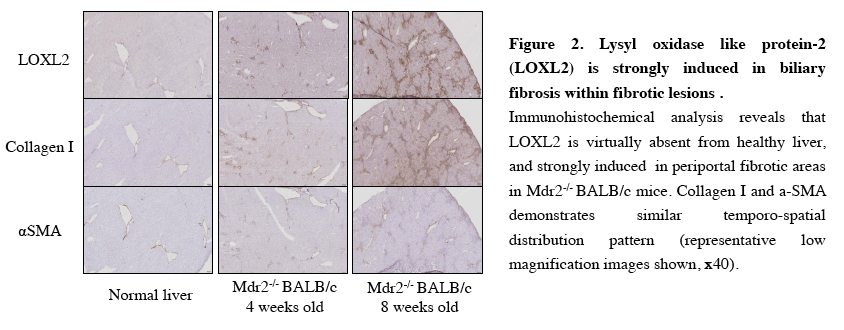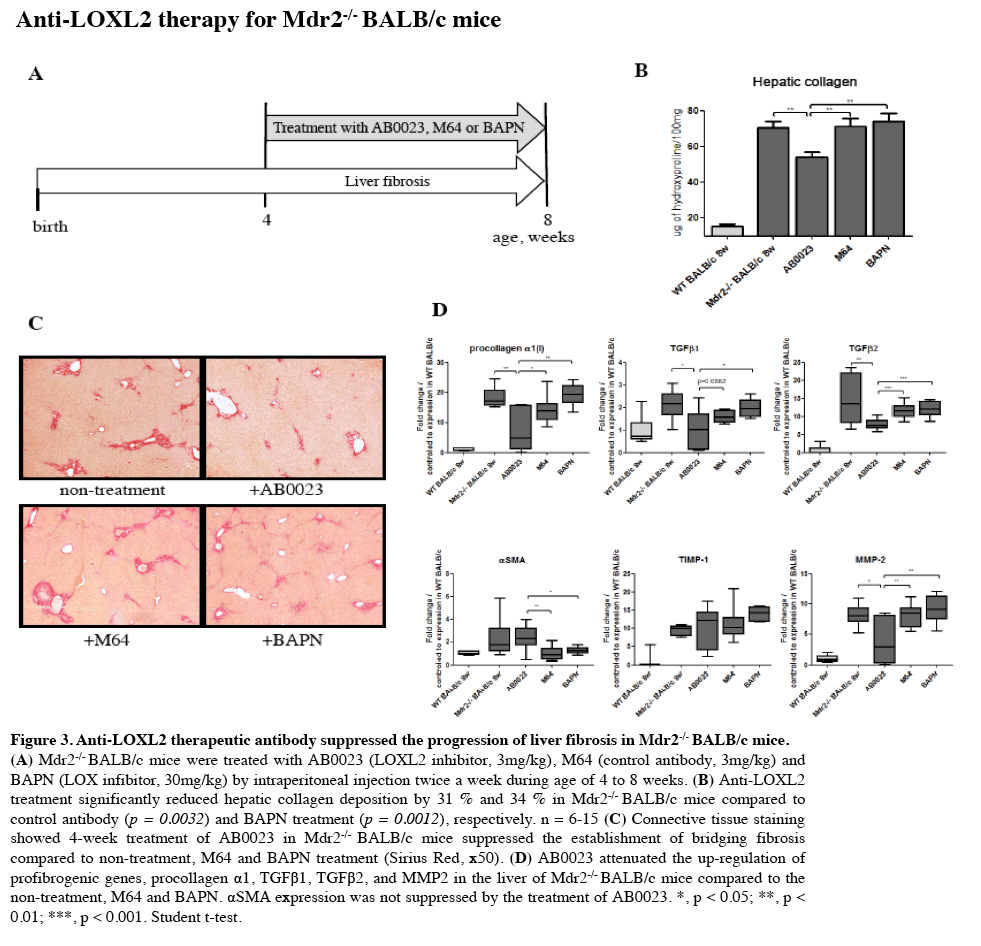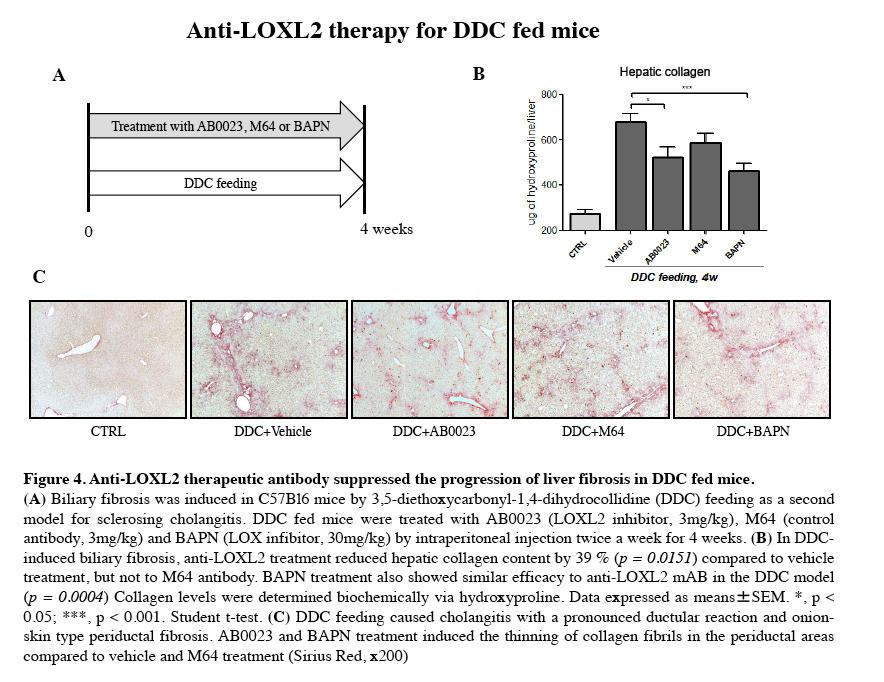 |
 |
 |
| |
Selective inhibition of lysyl oxidase like 2 (LOXL2) using a therapeutic monoclonal antibody suppresses the progression of biliary fibrosis in novel PSC-like mouse model
|
| |
| |
Reported by Jules Levin
AASLD 2013 Nov 1-4 Wash DC
Naoki Ikenaga1, Shuhei Yoshida1, Susan B. Liu1, Jeanhee Chung1, Deanna Sverdlov1, Derek Marshall2, Vivian Barry2, Victoria Smith2, Maria Kovalenko2, Satyajit Karnik2, Nezam H. Afdhal1, Yury Popov1
1Division of Gastroenterology and Hepatology, Beth Israel Deaconess Medical Center, Harvard Medical School, Boston, MA; 2Gilead Sciences, Foster City, CA
BACKGROUND/AIMS: LOXL2 is a key enzyme that promotescross-linking of collagen type I and is expected to be a novel therapeutic target for liver fibrosis. The efficacy of LOXL2 inhibitor on panlobular fibrosis has been previously demonstrated in hepatotoxin-induced models, however the efficacy in biliary-type fibrosis is not known. We studied the therapeutic efficacy of a novel anti-LOXL2 monoclonal antibody in two mouse models of primary sclerosis cholangitis (PSC)-like biliary fibrosis.
METHODS: We developed an improved mouse model resembling human PSC with rapidly progressive fibrosis and early-onset portal hypertension by backcrossing the Mdr2 mutation on a fibrosis susceptible background (BALB/c) (Figure 1). Anti-LOXL2 therapeutic antibody (AB0023mAB, 30mg/kg) or control antibody (M64, 30mg/kg) were administered i.p. twice a week in Mdr2-/- BALB/c mice (n = 10 per group) from age 4 weeks to 8 weeks (Figure 3A), and in C57BL/6 mice fed 3,5- diethoxycarbonyl- 1,4- dihydrocollidine (DDC)- diet for 4 weeks (n=9-11 per group, Figure 4A).
Non-selective lysyl oxidase inhibitor beta-animopropionitrile (BAPN, 100mg/kg/day, i.p.) was administered for comparison. Liver fibrosis was evaluated by histology, biochemical determination of collagen, and analysis of profibrogenic gene expression by qRT-PCR.
RESULTS: Immunohistochemical analysis revealed that LOXL2 was virtually absent from healthy liver, but was strongly induced in periductular fibrotic areas in mice with biliary fibrosis (Figure 2). Anti-LOXL2 treatment significantly reduced hepatic collagen deposition by more than 30% in Mdr2-/- BALB/c mice compared to control antibody (p = 0.0032) and BAPN treatment (p = 0.0012) (Figure 3B and 3C). Results were validated in a second, mechanistically different model of DDC-induced biliary fibrosis, where anti-LOXL2 treatment reduced hepatic collagen content by 39% (p = 0.0151) (Figure 4B and 4C). BAPN treatment showed similar efficacy to anti-LOXL2 mAB in the DDC model, but was ineffective in Mdr2-/- .BALBc model.




|
| |
|
 |
 |
|
|